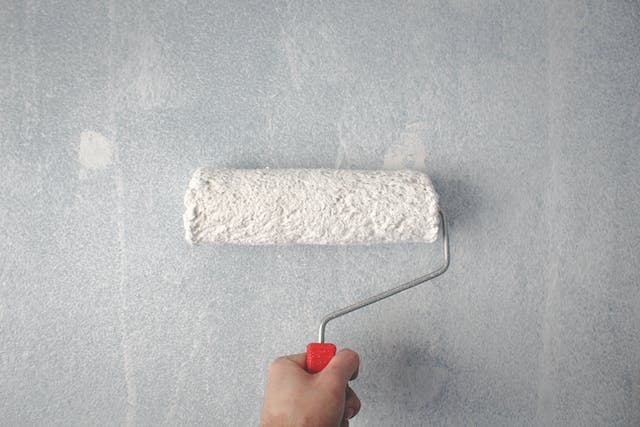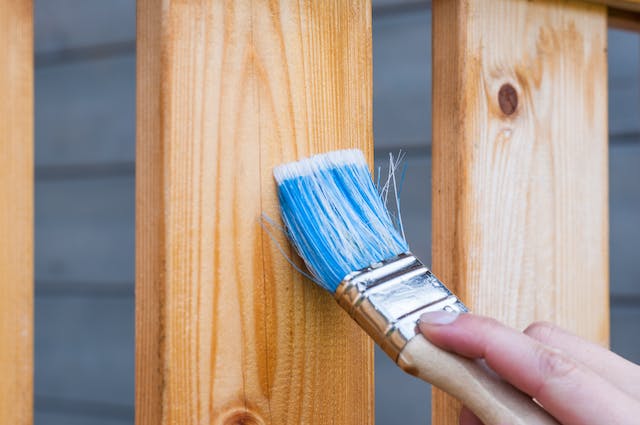A fresh coat of paint can do wonders for your home’s aesthetics, bringing new life to your living space and increasing curb appeal. Yet, many homeowners may struggle to identify when their home truly requires a new paint job.
Understanding the telltale signs of wear and tear can help determine the right time to invest in repainting, ensuring your property remains vibrant and well-protected against the elements.
Let’s explore the signs that suggest it’s time to refresh your home’s exterior or interior with some new paint.
Faded Paint
One of the most obvious signs that it’s time to repaint your home is fading paint. Over time, exposure to sunlight and other elements can cause paint to lose its color intensity and appear dull. This is especially noticeable on dark-colored paints, but lighter colors can fade over time.
If you notice significant fading on your home’s exterior or interior walls, it’s a good indication that it’s time for a new coat of paint. Not only will this improve the overall appearance of your home, but it will also protect the underlying surfaces from further damage.
Peeling or Cracking Paint
Peeling or cracking paint is unsightly and can lead to more significant issues if left unaddressed. When paint begins to peel or crack, it’s a sign that the protective layer has been compromised, leaving your walls vulnerable to moisture and other elements.
If you notice any areas where paint is peeling or cracking, it’s essential to address them promptly before they worsen. Repainting these areas will restore their appearance and prevent further damage.
Visible Damage
As homes age, they may show signs of wear and tear, such as visible wall damage. This can include chips, dents, or scratches on the exterior or interior surfaces.
Not only can this be unsightly, but it also leaves your home vulnerable to potential issues like water damage. Repainting damaged areas can help seal and protect them from further damage while improving the overall appearance of your home.
Stains and Discoloration
Many factors, including water damage, smoke, or mold, can cause stains and discoloration on your walls. These blemishes can be challenging to remove, making repainting the most effective solution.
If you notice any stains or discoloration on your walls, it’s a sign that they need to be repainted. This will restore your walls’ appearance and protect them adequately against future damage.
Outdated Color
Sometimes, the reason for repainting your home may not be due to any damage or wear and tear. Instead, you may simply want to update your home’s color scheme to give it a fresh look.
Repainting is an easy and cost-effective way to transform the look of your home. You can choose a new color that reflects your style better or opt for a more modern color scheme to increase your home’s curb appeal.
Things You Should Know When Repainting Your Home
If you have identified any of the above signs, it’s time to start planning your home repainting project. Here are some essential things you should consider before getting started:
- Choose Quality Paint: The quality of the paint you use will significantly impact the durability and appearance of your new paint job. Invest in high-quality paints to ensure long-lasting results.
- Hire Professionals: Repainting your home can be a time-consuming and challenging, especially if you have little experience with painting. Hiring professional painters will save you time and effort while ensuring a high-quality finish.
- Prepare the Surfaces: Before repainting, it’s important to clean and prep your walls properly. This will ensure that the paint adheres well and provides a smooth finish. If you need additional help with this, we suggest you ask a painting contractor.
- Consider Your Climate: The climate you live in can affect the performance of your paint. For example, if you live in an area with harsh weather conditions, choose a specifically designed paint for these conditions.
Additional Factors to Consider
- Environmental Impact: Choose eco-friendly paints with low or zero volatile organic compounds (VOCs) to minimize environmental impact and improve indoor air quality.
- Color Trends: Research current color trends or consult with a color specialist to select a palette that will remain appealing and fresh for years.
- Paint Finishes: Consider the different finishes available, such as matte, satin, or gloss, and choose one that will best suit the function and lighting of each room.
- Timing and Weather: Plan your painting project during a season with favorable weather conditions to ensure proper drying and curing of the paint.
- Budget Planning: Account for all potential costs, including paint, supplies, and professional services, to create a realistic budget for your project.
- Maintenance Plan: Establish a routine maintenance plan to clean and inspect painted surfaces regularly, extending the lifespan of your paint job.
Conclusion
Repainting your home is a crucial part of maintaining its value, protecting it against wear and tear, and improving its overall appearance. Understanding the telltale signs for repainting and following these essential tips ensures that your home remains vibrant and well-protected for years.
So watch for any fading, peeling, or visible damage, and don’t hesitate to update your home’s color scheme. With proper planning and professional assistance, you can give your home a fresh new look that will make it the envy of the neighborhood.


